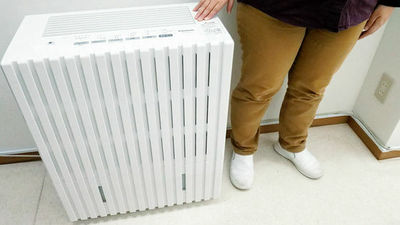How to do 'ventilation' as a new coronavirus countermeasure?

'Ventilation' is important as a measure against the new type of coronavirus, but 'How to actually ventilate?' Is not widely known, and the Architectural Institute of Japan and the Air Conditioning and Sanitary Engineering Society view it Is shown.
Emergency Chairman's Talk on 'Ventilation' in Control of New Coronavirus Infections
(PDF file)
The Ministry of Health, Labor and Welfare published on March 9, 2020, `` (PDF File) Views on New Coronavirus Infectious Disease Control Measures, ' ' as an example of situations where the risk of cluster (group) occurrence in daily life is high, Candidates were 'poorly-ventilated enclosed space', 'densely crowded places', and 'close scenes of up-close conversations and voices'.

The government commented on encouraging ventilation: 'In windowed environments, open windows in two directions at the same time, if possible, to enforce ventilation. However, there is still no established evidence of how much ventilation is adequate. Is not there. ' However, it did not show specific ventilation methods in various situations, such as an environment without windows, and was inquired. Therefore, the Architectural Institute of Japan and the Society of Air Conditioning and Sanitary Engineers show 'how to ventilate' as follows.
1: Ventilation rate
The word 'ventilation twice / hour' is often misunderstood as 'opening the window twice an hour', but the number of ventilations is the volume of outside air entering the room per hour (cubic meters). It is the index that expresses the speed of air exchange , divided by (rice). The number of ventilations is determined by the size of the inlet and outlet when the air is exchanged, and the size of the room itself. As the number of ventilations increases, the dirty indoor air can be diluted with outside air and replaced more quickly. It is said that more detailed explanations will be provided in the future regarding the ventilation rate.
2: Natural ventilation and mechanical ventilation

Ventilation can be broadly divided into 'natural ventilation' in which windows are opened and 'mechanical ventilation' using fans. In buildings and vehicles with windows, it is effective to open the windows actively to take in outside air, but in automobiles, etc., it is also effective to set the mode to take in outside air instead of 'inside air circulation mode'. At this time, it is important to check that the intake and exhaust ports are not blocked.
3: Ventilation in a room without windows
In office buildings, air-conditioning equipment that can ventilate rooms without windows maintains the indoor environment. Introducing outside air will lower the cooling and heating efficiency, but it is possible to take measures such as increasing the amount of outside air intake as long as it does not hinder operations.
Ordinary household air conditioners and packaged air conditioners only circulate air and do not provide ventilation. The air conditioner is turned on, so it is not a problem. It is recommended that you open the window or operate the ventilation system in rooms that only have air conditioner.
4: Air purifier
It is not known whether general air purifiers are sufficiently effective against the new coronavirus for the entire room because the amount of air passing through is smaller than the ventilation volume. Due to the range of air purifiers, it is recommended that regular ventilation be used instead of relying solely on the air purifier.
Related Posts:
in Note, Posted by darkhorse_log







